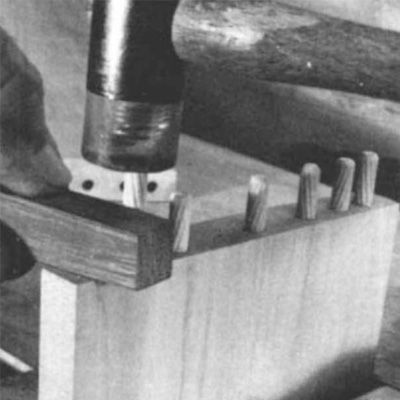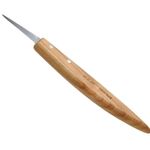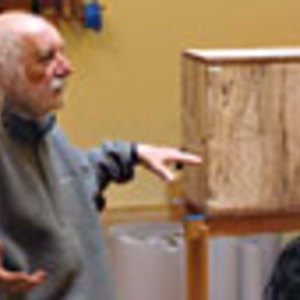
Synopsis: In this excerpt from The Fine Art of Cabinetmaking, James Krenov says that when done right and used in a sensible relationship to the piece, to its character, and its aims, doweling is a very good way of putting cabinets and even chairs together. However, bad results can increase our doubts. Krenov issues a series of maxims and then defends or explains them, such as when it’s right not to use dowels, the importance of accuracy, drill selection, and the art of making jigs. He also discusses gluing and safety measures.
There is a lot of misunderstanding about doweling. While it is a widely used method in industry, rather little is known about it among craftsmen, at least in America; in Europe it is more commonly used. Because doweling is not visible as a joint, some craftsmen tend to be suspicious of it. When we use this technique without proper knowledge we use it badly, with bad results that increase our doubts.
By its nature, doweling is not convincing; the eye does not see how this joint is put together, and there is no pattern there to reassure you that those pieces of wood will stay together. When done right and used in a sensible relationship to the piece, to its character and its aims, doweling is a very good way of putting cabinets and even chairs together. It is primarily a commercial or production way of joining pieces, which I suppose is a part of our prejudice against it.
The cabinetmaker’s use of doweling should always be a matter of judgment. If you are making a seaman’s chest that is going to be thrown downstairs or onto a ship, or a solid wood piece where other joints, visible and decorative, would be better, then use other joints. I do not think a seaman’s chest should be doweled; it should be dovetailed. But a cabinet case can be doweled, especially if it is going to be a wall cabinet, and it will last for generations. One reason for choosing to dowel is visual, the character of the piece we are making. By doweling the case you can achieve a definite and fine-lined character; you get a visible top and bottom piece that can be made to protrude as you wish beyond the sides to give a horizontal outline at these extremities. You can do all sorts of nice things with these horizontals. You are free to bevel as you wish, to polish the end grain beautifully, to play with touches such as little foundings, and achieve the shadings which will emphasize the shape of the piece itself—lending it a very special air.
From Fine Woodworking #7
For the full article, download the PDF below:
Fine Woodworking Recommended Products

Starrett 4" Double Square

Festool DF 500 Q-Set Domino Joiner

Pfiel Chip Carving Knife























Log in or create an account to post a comment.
Sign up Log in